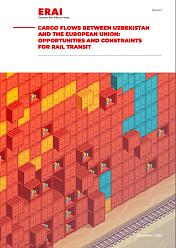Residents can now move freely about the city, but they must have a negative 72-hour Covid test to access offices, public places and transport.
And manufacturers can now operate without special permits or being hampered by closed-loop conditions.
But, Thomas Gronen, head of Greater China at Fibs Logistics, said the city’s reopening would not be «the same as turning on the lights».
He explained: «It will take weeks, if not months, to come back to anything considered as normal for the industrial output volumes, and then the shipping container volumes.»
Norman Global Logistics said Shanghai would remain a «high risk area, with limitations and controls for trucks to get in and out of the city,» thereby keeping a cap on available trucking capacity, which has been the biggest logistical challenge throughout the crisis.
According to Crane Worldwide Logistics, ocean carrier schedules will gradually return to normal in June, and the forwarder added: «However with all factories re-opened, we expect volumes will also increase gradually, especially from the middle of June onward.»
As for airfreight, Crane noted: «Export volume will build up very quickly, and the market will become very dynamic in June.»
Indeed, common sentiment has been that a sudden glut of cargo would flood the market post-lockdown, as factories play production catch-up.
For example, Maximilian Butek, chief representative at Delegation of German Industry and Commerce in Shanghai, noted on social media: "For the value chains to be fully restored to a pre-lockdown level, it will still take some more weeks for sure.
«We can also expect increased congestion on the port, as with the weeks coming, all companies want to ship their goods out as well as receive their goods, all at the same time.
«Uncertainty remains high as no one knows if this could repeat any time, as soon as a new wave hits China.»
Furthermore, the latest Shanghai port data from FourKites shows the so-called bullwhip effect is yet to materialise. It said throughput decreased over the past week, with the 14-day average ocean shipment volume down 17% when compared to 12 March, when the lockdown began.
Glenn Koepke, FourKites’ general manager of network collaboration, added: "When Shanghai shut down, other Chinese ports picked up some of that volume. It is unlikely that there is a massive backlog of cargo waiting to depart and, instead, we will see a quick spike in volume, but it will quickly return to normal levels.
«Already, companies [in the west] have been carrying extra inventory to brace for ongoing and future disruptions. As publicly traded companies release quarterly earnings, this will be noticeable within their inventory costs for Q2.
«Order volumes will have a longer lag than usual, given this approach to have more inventory on hand now to fulfill orders that will occur in the near term. This is driven by Shanghai, inflation, the US west coast labour agreement and companies getting into peak summer seasons.»





